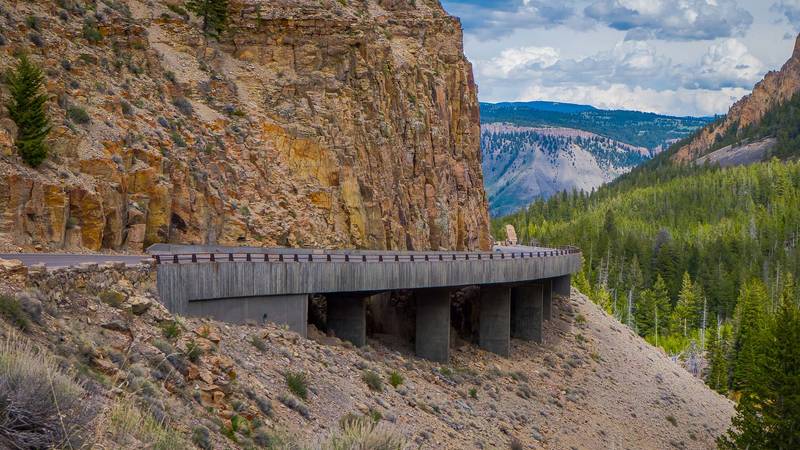In the 1920s and 30s, Filipino immigrants arrived in the United States seeking fortune but facing discrimination as they worked in the vast agricultural fields of the West. These “manongs” played a significant role in building the farm workers movement, organizing and striking alongside Cesar Chavez and Dolores Huerta.
Fred Abad passed away in 1997. He spent his last days at Agbayani Village in Delano, California, a retirement home originally built for Filipino farm workers. He was the last of the manongs, the first major wave of Filipino immigrants, mostly men, who came to the U.S. in the 1920s and 30s. “Manong” comes from a northern Philippines dialect called Ilocano and is a term of affection and respect, best translated as “older brother.” Many Filipino Americans apply the term to this first wave of immigrants — pioneers like Fred, who, in 1929 at the age of 17, boarded a steamship seeking fortune in America.

Labor of Love
New California park site dedicated to the work of labor leader César Chávez.
See more ›Fred planned to pursue his education in America, a promise he made to his dying mother. Unfortunately, the experiences of the manongs were too often of hardship, loneliness and struggles against racism, discrimination and exploitation. Filipino men in the U.S. outnumbered Filipina women 14 to one. Barred by law from marrying outside their race, owning land and other basic rights, the manongs became the labor force for the West’s vast and growing agricultural industry, and 100,000 would find themselves toiling in fields and orchards from Washington to Arizona, working in strenuous conditions and for meager pay.
Some manongs sent their pay back to the Philippines, and others tried to save up enough to return home to marry or retire, or to attend college in the U.S. Few ever realized these dreams. Fred was one of the few who was able to find a female companion. Because she was a white woman, they kept their relationship hidden from the public for years to avoid legal persecution or, worse, violent retribution.
With the onset of the Great Depression, Filipinos and other immigrants were convenient scapegoats for the troublesome economic times and subject to racist attacks. In 1930, a mob in Watsonville, California, dragged dozens of Filipino men from their homes and beat them. One was shot and killed. Deaths also resulted from the bombings of Filipino labor camps, often with the complicity of local law enforcement. Throughout the late 19th and early 20th centuries, organizing efforts among farm workers were often met with violence, persecution and imprisonment, with agribusiness interests abetted by local, state and national policies all but ensuring the mostly immigrant workforce effectively remained second-class citizens.
Despite the charged racial and economic environment, the manongs never abandoned their dreams for a better life and dignity in America. Throughout the 1930s, 40s and 50s they organized successful strikes and work stoppages, formed unions and began winning significant improvements to wages and work conditions. By the 1960s, with the prominence of the Civil Rights movement and a spirit of social change in the air, these workers consolidated under the leadership of manongs Philip Vera Cruz, Larry Itliong and others as the mostly Filipino Agricultural Workers Organizing Committee (AWOC).
The Strike Heard Round the World
In September 8, 1965, the AWOC decided to strike against Delano grape growers, demanding pay equal to the federal minimum wage. It was a bold move. Few strikes of this scale had been attempted, and growers had refined their own strategies for combating such efforts. They included fear tactics, hiring thugs to break up union activities and keeping the workforce effectively divided by pitting workers of different races against each other.
Recruitment and Exclusion
Larry Itliong reached out to the predominantly Mexican American National Farmworkers Association, led by a young Cesar Chavez, Dolores Huerta and others, to join the strike. Chavez was hesitant at first, unsure the movement had the strength to take on Delano’s powerful agribusiness interests. However, 12 days later, they joined the strike, and the groups would eventually merge to form the United Farm Workers (UFW). The strike would last five years and end in 1970 when the UFW reached collective bargaining agreements with several grape growers, improving the lives of over 10,000 workers.
With changes in immigration policy and the availability of new economic opportunities, the participation of Filipino Americans in farm labor declined rapidly. By the 1980s and 90s only a handful of manongs, now in retirement, survived. Today, a few remaining monuments help keep their story alive for future generations.
In 2013, the National Park Service identified two sites in Delano, California, for potential inclusion in the National Park System for their relevance to the Filipino farmworker story. They include The 40 Acres, former headquarters of the UFW and the site of Agbayani Village, built by volunteers in 1974 to house aging Filipino farmworkers. The second facility, Filipino Community Hall, was the site of critical meetings and organizing efforts leading up to and after the start of the 1965 Delano grape strike.
The courage and conviction of the manongs left a lasting legacy that continues to inspire new generations of Filipino Americans, as well as workers’ rights and immigration advocates. And despite the turmoil and hardship he endured and witnessed throughout his life, Fred never lost his hope in America, and remained ever-optimistic about the future. In a 1993 interview at the age of 81, Fred told the New York Times, “I’m old, I’d like to spend a little time over [in the Philippines] before I die. Maybe I can get married to a Filipina.“
Stay On Top of News
Want more great national park stories and news? Join our email list and get them delivered to your inbox.
About the author
-
 Dennis Arguelles Southern California Director, Pacific
Dennis Arguelles Southern California Director, PacificDennis, Los Angeles Program Manager, works on park protection and expansion efforts as well as engaging diverse and underserved communities not traditionally connected to the national parks.
-
General
-
- NPCA Region:
- Pacific
-
Issues


